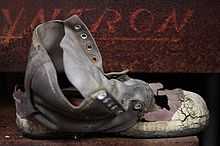Wear and tear

Wear and tear is damage that naturally and inevitably occurs as a result of normal wear or aging. It is used in a legal context for such areas as warranty contracts from manufacturers, which usually stipulate that damage due to wear and tear will not be covered.
Wear and tear is a form of depreciation which is assumed to occur even when an item is used competently and with care and proper maintenance. For example, repeated impacts may cause stress to a hammer's head. In the normal use of a hammer for its designed task, this stress is impossible to prevent, and any attempt to eliminate it would make the hammer useless. At the same time, it is expected that the normal use of a hammer will not break it beyond repair until it has gone through a certain amount of use.
The phenomenon of tear and wear is a good demonstration of the second law of thermodynamics in action—roughly speaking, objects will get messier and more worn down over time (they are said to have higher entropy), unless energy from the outside world is used to fix them.
A company which supports a warranty on a product with the possibility of tear and wear will usually limit the warranty to a period of time where its tear and wear will probably not be enough to impede the use of the product significantly. Other factors such as the willingness of a customer to replace a product through warranty will affect how long the company offers it.
See also
External links
| Look up wear and tear in Wiktionary, the free dictionary. |